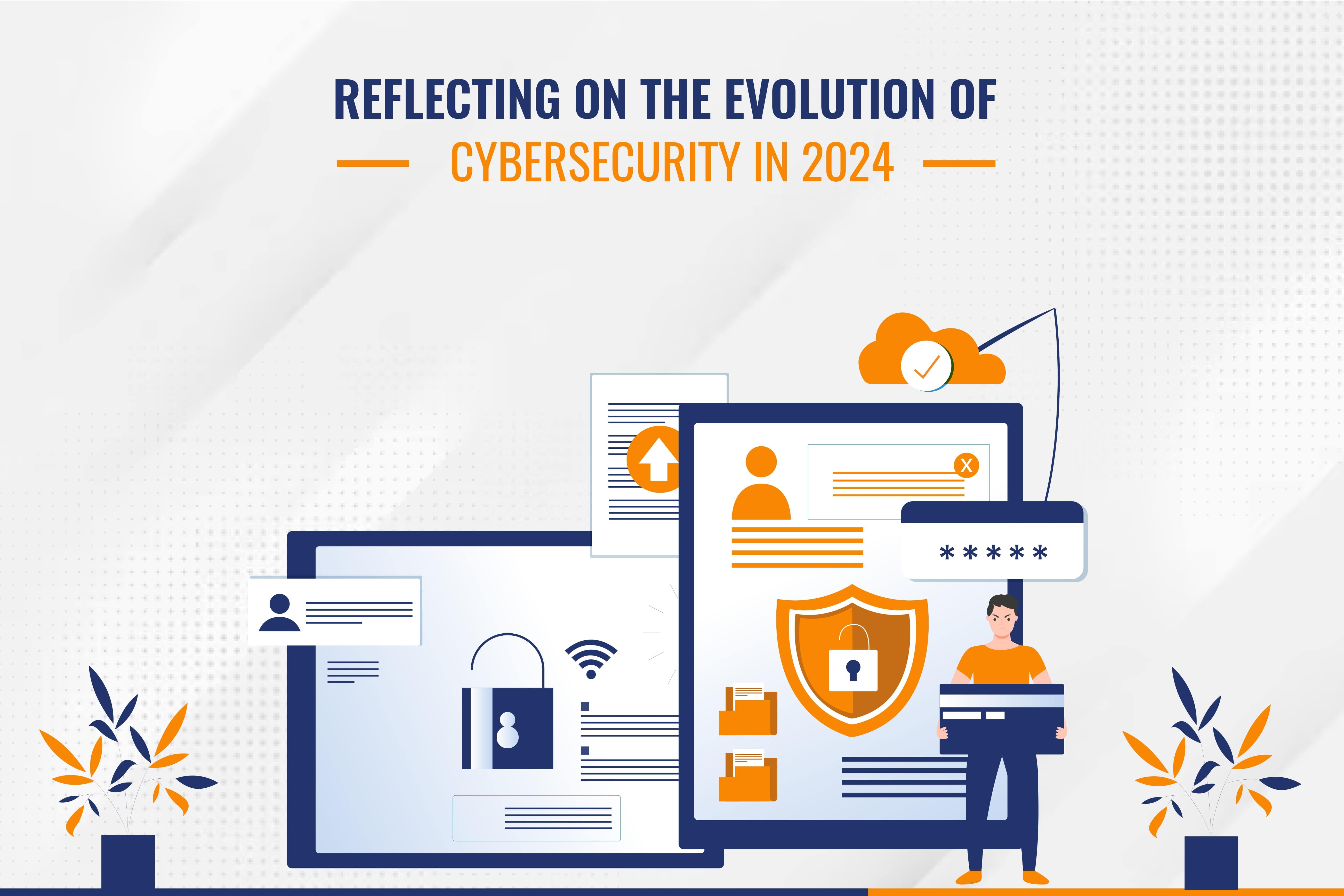
Reflecting on the Evolution of Cybersecurity in 2024
In the ever-expanding digital landscape, cybersecurity stands as a critical pillar safeguarding sensitive information and infrastructure from cyber threats. As we step into 2024, the realm of cybersecurity has witnessed significant evolution, driven by technological advancements, emerging threats, and evolving strategies.
Evolution of Cybersecurity Landscape
The year 2024 marks a pivotal point in the evolution of cybersecurity, characterized by the convergence of various factors reshaping the landscape:
Advanced Threat Landscape
Cyber threats have become more sophisticated, leveraging artificial intelligence (AI), machine learning (ML), and automation to orchestrate complex attacks. Threat actors continuously adapt their tactics, techniques, and procedures to evade traditional security measures.
Digital Transformation Acceleration
The rapid adoption of cloud computing, Internet of Things (IoT), and interconnected systems has expanded the attack surface, presenting new challenges for cybersecurity professionals. Organizations are grappling with securing decentralized environments and ensuring the resilience of digital ecosystems.
Regulatory Compliance Demands
Stringent data protection regulations, such as GDPR, CCPA, and emerging frameworks, compel organizations to enhance their cybersecurity posture and adhere to compliance requirements. Non-compliance not only poses legal ramifications but also undermines trust and reputation.
Remote Work Paradigm
The shift towards remote work models in response to the global pandemic has intensified cybersecurity concerns. Remote endpoints, virtual collaboration tools, and home networks introduce vulnerabilities that threat actors exploit to infiltrate corporate networks and exfiltrate sensitive data.
Cybersecurity Skills Gap
The demand for cybersecurity professionals continues to outpace the supply, exacerbating the skills gap. Organizations struggle to recruit and retain talent with the requisite technical expertise and hands-on experience to combat evolving threats effectively.
Addressing Challenges Through Technical Training Programs
In the face of these challenges, technical training programs and courses play a pivotal role in empowering cybersecurity professionals with the knowledge, skills, and capabilities needed to navigate the complex threat landscape. Here's how these programs contribute to bridging the skills gap and enhancing cybersecurity resilience.
Comprehensive Curriculum
Technical training programs offer a comprehensive curriculum covering a wide range of cybersecurity domains, including network security, cloud security, cryptography, ethical hacking, and incident response. Participants gain a deep understanding of theoretical concepts and practical tools essential for defending against cyber threats.
Hands-on Labs and Simulations
Hands-on labs and simulations provide participants with immersive learning experiences, allowing them to apply theoretical knowledge in simulated environments. These practical exercises replicate real-world scenarios, enabling learners to develop critical thinking skills, incident response capabilities, and proficiency with cybersecurity tools and technologies.
Industry-Relevant Certifications
Technical training courses often culminate in industry-recognized certifications such as CompTIA Security+, Certified Information Systems Security Professional (CISSP), Certified Ethical Hacker (CEH), and Offensive Security Certified Professional (OSCP). These certifications validate the expertise of cybersecurity professionals and enhance their credibility in the job market.
Specialized Tracks and Pathways
Recognizing the diverse interests and career aspirations within cybersecurity, technical training programs offer specialized tracks and pathways tailored to specific roles and domains. Whether aspiring to become penetration testers, security analysts, or security architects, participants can choose programs aligned with their professional goals and interests.
Continuous Learning and Professional Development
Cybersecurity is a dynamic field that requires continuous learning and upskilling to stay abreast of emerging threats and technologies. Technical training courses provide avenues for ongoing professional development through advanced courses, workshops, and webinars, enabling cybersecurity professionals to remain proactive and adaptable in their roles.
Technical Management Training: Nurturing Cybersecurity Leadership
In addition to technical proficiency, effective cybersecurity leadership is essential for driving organizational resilience and aligning cybersecurity initiatives with business objectives. Technical management training programs equip cybersecurity professionals with the leadership, strategic planning, and communication skills needed to assume managerial and executive roles within cybersecurity teams. Key components of technical management training include:
Leadership Development
Technical management training programs focus on developing leadership competencies, including team building, conflict resolution, decision-making, and strategic planning. Participants learn to inspire and motivate teams, foster collaboration across departments, and cultivate a culture of cybersecurity awareness and accountability.
Business Acumen
Cybersecurity leaders must possess a strong understanding of business operations, risk management principles, and regulatory compliance requirements. Technical management training programs integrate business-focused coursework, case studies, and simulations to impart financial literacy, risk analysis, and compliance management skills.
Communication and Stakeholder Engagement
Effective communication is paramount for cybersecurity leaders to articulate the value of cybersecurity investments, communicate risk posture to senior management, and engage stakeholders across the organization. Technical management training programs emphasize communication strategies, public speaking, and interpersonal skills development to enhance leadership effectiveness.
Strategic Planning and Decision-Making
Cybersecurity leaders are responsible for developing and executing comprehensive cybersecurity strategies aligned with organizational goals and risk tolerance. Technical management training programs provide frameworks and methodologies for strategic planning, risk assessment, resource allocation, and decision-making in complex and dynamic environments.
Ethical Leadership and Governance
Cybersecurity leaders must uphold ethical standards, promote transparency, and ensure compliance with legal and regulatory requirements. Technical management training programs instill principles of ethical leadership, governance frameworks, and ethical decision-making models to foster trust, integrity, and accountability within cybersecurity teams.
Conclusion
As we reflect on the evolution of cybersecurity in 2024, it is evident that the journey towards cyber resilience is multifaceted, encompassing technological innovation, regulatory compliance, workforce development, and strategic leadership. Technical training programs and courses serve as catalysts for empowering cybersecurity professionals with the knowledge, skills, and leadership capabilities needed to confront evolving threats and safeguard digital assets.
By investing in continuous learning, professional development, and a culture of cybersecurity excellence, organizations can navigate the complexities of the digital landscape with confidence and resilience, ensuring a secure and prosperous future for all stakeholders.
